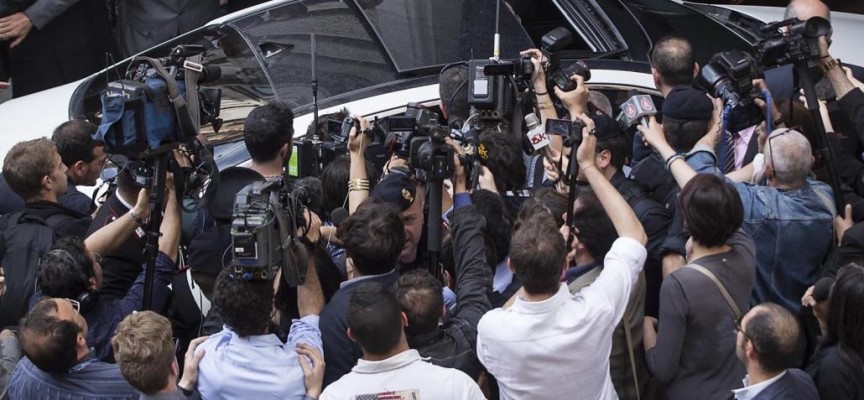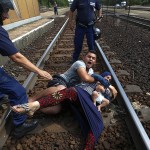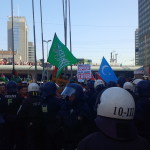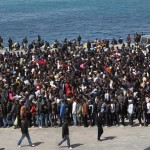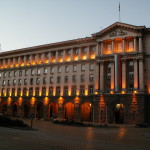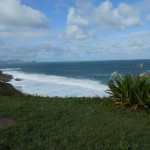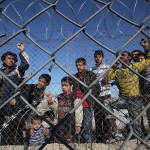The attacks in early January, a drama that becomes a spectacle. The attacks in the Bardo Museum, a drama that becomes a spectacle. The crash of Airbus A320, the carnage in the Mediterranean, drama which become a show. And I quote only the most recent examples.
Ten years ago, in a book written together with Msgr. Jean-Charles Descubes we already underlined this: “The direct, the immediate and real time stand out as criteria of authenticity and truth. […] It is no longer a matter of temporal distance, it is the space one that is changed. No one can remain aloof from what is happening. […] Such a process hinders the vocation of the media to keep the distance when approaching the event or the person which is object of the information. The image makes the intervention of the media more disconcerting than the story itself. The imagery and the emotion are no longer called into question in duration and freedom”.
So, where does the information finishes and where does the show start? The information ends when it endangers people, as we have seen during the live calls of the hostages at the Bardo Museum. The information ends when it no longer respects the dignity of a man, a woman, the body. When it shows us a beheading or the naked body of a person stoned. The information ends when it no longer wants to inform but to do audience, mixing speculation, blood and intimacy. The information ends when, as Le Canard enchaîné told us, a journalist is fired because he dared to write to his director that the channel is haunted by the audience and privileges what is sensationalistic to information ethics. The information ends when it might win an Oscar.
“The retention of information is a form of constipation of knowledge”, said Théophraste Renaudot, the founder of the press, in the 17th century. Today, in my opinion, he would denounce the reverse excess: “The show information is a form of diarrhea (often foul-smelling) of the media”.
Les attentats de début janvier, drame qui vire au spectacle. Les attentats du musée du Bardo, drame qui vire au spectacle. Le crash de l’A320 qui vire au spectacle, le carnage dans la Méditerranée, qui vire au spectacle. Je ne cite là que les exemples les plus récents.
Il y a dix ans, dans un livre co-écrit avec Mgr Jean-Charles Descubes, nous soulignions déjà la chose suivante : “Le ‘direct’, l’immédiat et le temps réel s’imposent comme critères d’authenticité et de vérité. […] Ce n’est plus seulement la distance temporelle, mais aussi spatiale qui est modifiée. Personne ne peut rester extérieur à ce qui se passe. […] Un tel processus contrecarre la vocation des médias à maintenir la distance tout en rapprochant de l’événement ou de la personne, objet de l’information. L’image rend l’intervention des médias plus percutante que le récit. L’imaginaire et l’affectivité ne sont plus mobilisés dans la durée et dans la liberté”.
Alors, où s’arrête l’information et où commence le spectacle. L’information s’arrête quand elle met en danger les personnes comme nous l’avons vu lors des appels téléphoniques en direct des otages du musée du Bardo. L’information s’arrête quand elle ne respecte pas la dignité de l’homme, de la femme, du corps. Quand elle nous montre une décapitation ou le corps dénudée d’une personne lapidée. L’information s’arrêteencore quand elle en vient plus informer mais faire de l’audimat en mélangeant spéculation, sang et intimité. L’information s’arrête quand, comme nous l’annonce Le Canard enchaîné, un journaliste est viré car il a osé écrire à son patron que sa chaîne était obsédée par l’audience et qu’elle privilégiait le sensationnel sur l’éthique due à l’information. L’information s’arrête quand elle pourrait être primée aux Oscars.
“La rétention de l’information est une forme de constipation du savoir”, disait Théophraste Renaudot, le fondateur de la presse au XVIIe siècle. Aujourd’hui, c’est à mon avis l’excès inverse qu’il dénoncerait : ”L’information spectacle est une forme de diarrhée (parfois puante) des médias”.
Il dramma diventa spettacolo
Gli attentati d’inizio gennaio, dramma che diventa spettacolo. Gli attentati al Museo del Bardo, dramma che diventa spettacolo. Lo schianto dell’Airbus A320 e l’ecatombe nel Mediterraneo, drammi che diventano spettacolo. E cito solo gli esempi più recenti.
Dieci anni fa, in un libro scritto a quattro mani con mons. Jean-Charles Descubes, già sottolineavamo questo: “Il diretto, l’immediato e il tempo reale s’impongono come criteri di autenticità e di verità. […] Non si tratta più soltanto di distanza temporale, è quella spaziale che viene modificata. Nessuno può più rimanere estraneo a quello che sta succedendo. […] Un processo del genere ostacola la vocazione dei media a mantenere la distanza nell’avvicinarsi all’avvenimento o alla persona, oggetto dell’informazione. L’immagine rende l’intervento dei media più sconcertante rispetto al racconto. L’immaginario e l’emotività non sono più chiamati in causa nella durata e nella libertà”.
Allora, dove finisce l’informazione e dove inizia lo spettacolo? L’informazione finisce quando essa mette in pericolo le persone, come abbiamo visto durante le chiamate in diretta degli ostaggi al Museo del Bardo. L’informazione finisce quando essa non rispetta più la dignità dell’uomo, della donna, del corpo. Quando essa ci mostra una decapitazione o il corpo nudo di una persona lapidata o annegata. L’informazione finisce quando essa non vuole più informare ma fare auditel, mischiando speculazione, sangue e intimità. L’informazione finisce quando, come ci annuncia Le Canard enchaîné, un giornalista è licenziato perché ha osato scrivere al suo direttore che il canale è ossessionato dall’audience e privilegia il sensazionalistico sull’etica dell’informazione. L’informazione finisce quando potrebbe vincere agli Oscar.
“La ritenzione dell’informazione è una forma di costipazione del sapere”, diceva Théophraste Renaudot, il fondatore della stampa, nel XVII secolo. Oggi è, a mio avviso, l’eccesso inverso che egli denuncerebbe: “L’informazione spettacolo è una forma di diarrea (spesso maleodorante) dei media”.
Mgr. Jean-Michel di Falco Léandri
Évêque de Gap et d’Embrun (France)
Latest posts by Mgr. Jean-Michel di Falco Léandri (see all)
- The dust of Europe and the dust of Africa - 20 febbraio 2016
- The drama becomes a spectacle - 30 aprile 2015
- Easter: the Risen and disorder in the world - 4 aprile 2015

